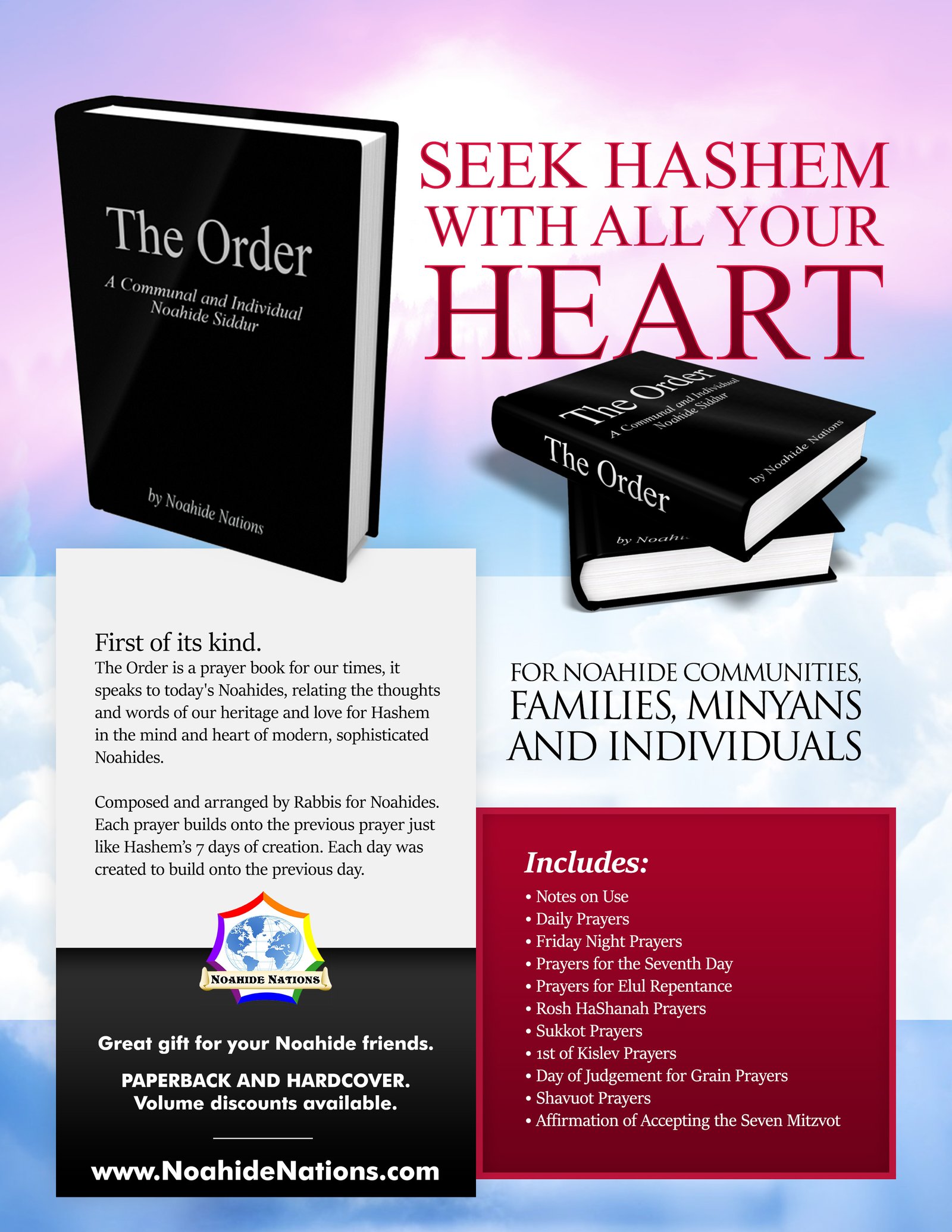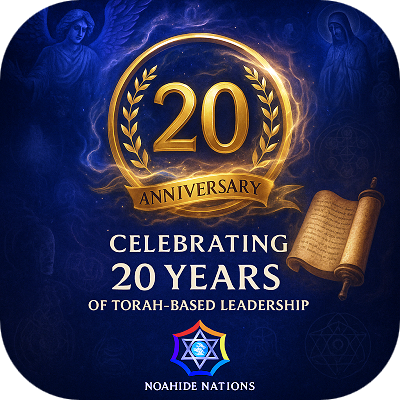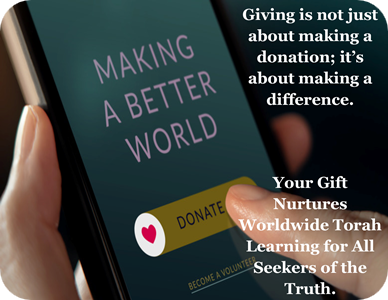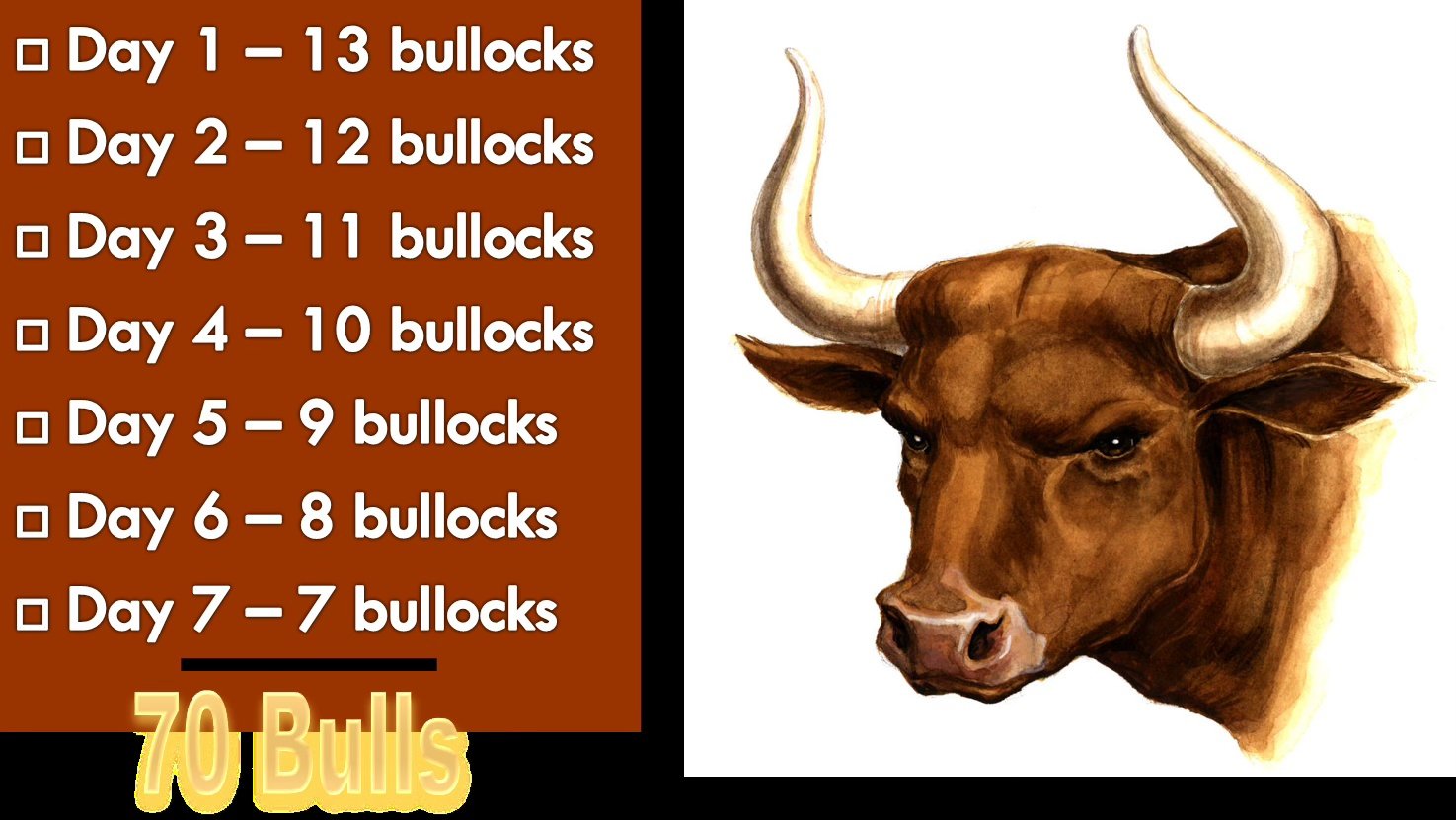
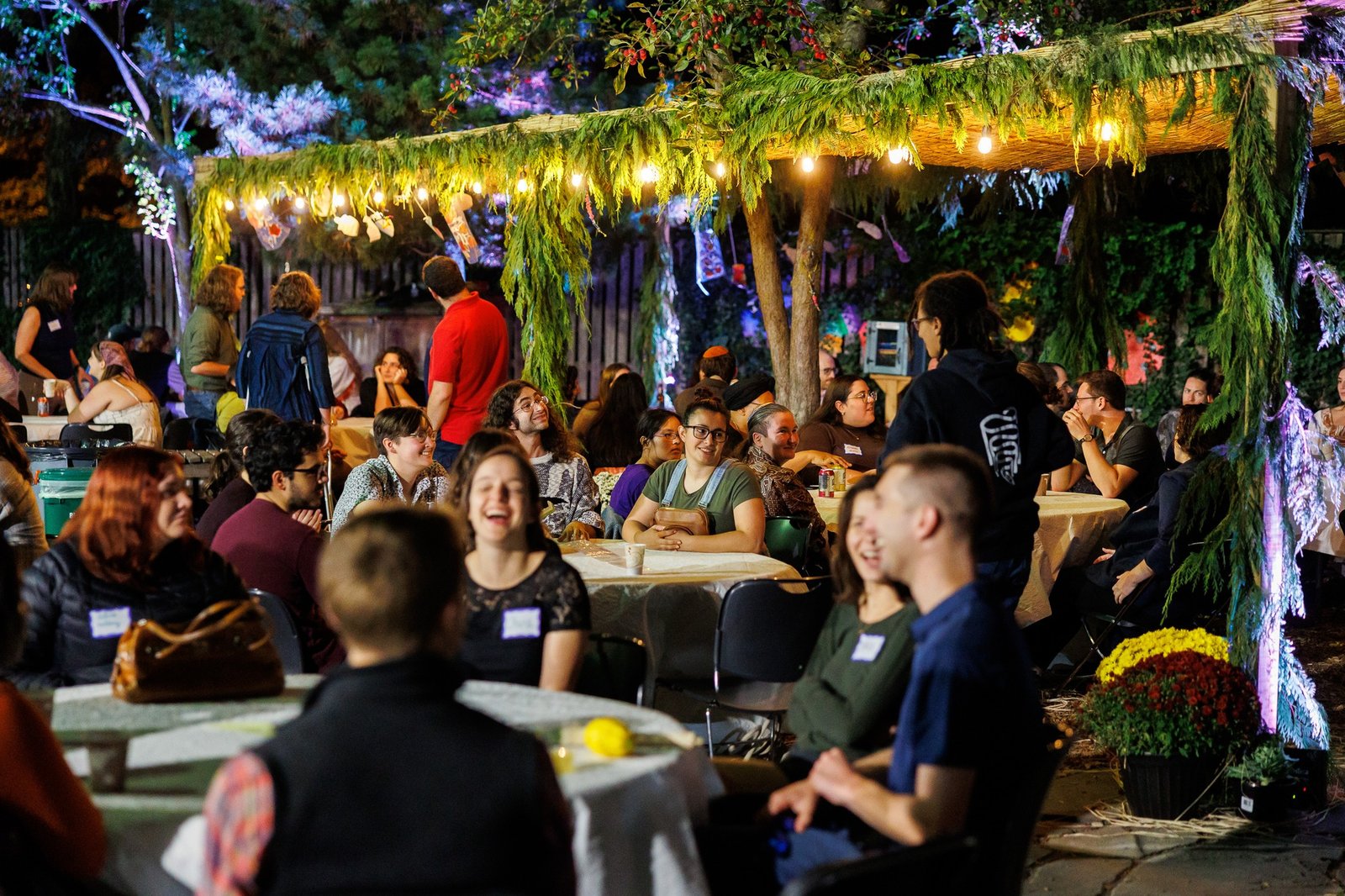
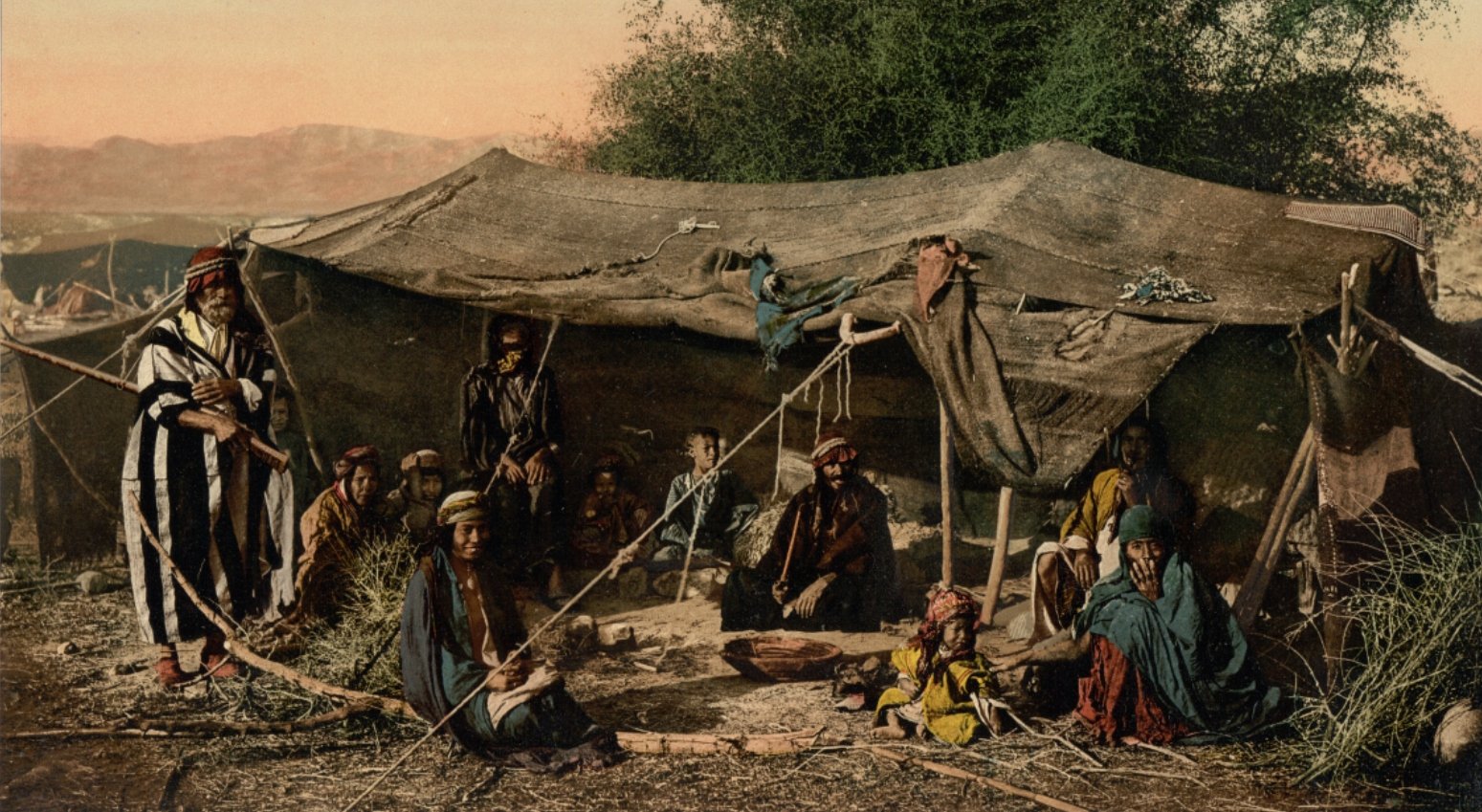
Festival of Sukkot for Non-Jews
Introduction
The Festivals of the Torah and their meanings transcend any particular time or place. Nevertheless, each of the holidays is anchored to some event in history. Yom Kippur is the most important Jewish holiday after Rosh HaShanah. However, its historical anchor and meaning are both unique to Israel alone. The purpose and theme of Yom Kippur, though, has a universal parallel in the holiday of Sukkot. Furthermore, the historical anchor of Sukkot is directly related to Noahism.
Yom Kippur & History
On the 7th day of Sivan, Moses ascended Sinai and remained there for 40 days and 40 nights (See Rashi to Ex. 32:1). At the end of this period, Moses received the first set of tablets (Ex. 31:18).
On the 16th of Tammuz, the Jewish people construct the Golden Calf (Ex. 32:1 – 5; See Rashi). They began worshiping it on the following morning (Ex. 32:6). God commands Moses to descend on that day, the 17th of Tammuz. Upon seeing the people’s transgression, Moses cast down the tablets, breaking them against the mountain. He grinds the calf into dust; mixing it with water and makes the people drink it. The Levites are commanded to kill all of the transgressors (Ex. 32:7 – 9).
On the 19th of Tammuz, Moses ascends the mountain again (Ex. 32:30 – 34). During this ascent, Moses secured a tentative pardon for the people.
He descended at the end of 40 days, on the 29th of Av, to inform the people of this.
On the 1st of Elul, Moses ascended the mountain for a third time Ex. (34:4-17). During this third 40-day ascent, Moses finally achieved pardon for the Jewish people (Ex. 33:17, 8-10). At the end of this period, Moses descended with the second set of tablets (Ex. 34:1-2, 27 – 29). The date of this descent was the 10th of Tishrei – Yom Kippur.
This day would be designated as a day of atonement for the Jewish people for all times:
This shall remain for you an eternal decree: In the seventh month, on the tenth day of the month, you shall afflict yourselves and you shall not do any work, neither the native nor the convert among you, for on this day He shall provide atonement for you to cleanse you from your sins – before the Lord you shall be cleansed.1
Yom Kippur’s general theme, atonement, is anchored in the history of the Jewish people and the sin of the golden calf.
Being anchored in the historical experience of Israel and, being commanded only to Israel, Yom Kippur only provides atonement for Israel. As such, it is not a Noahide holiday and, therefore, does not have any relevance to Noahides. Does this mean, then, that Noahides have no means of atonement? No – it does not. God designated another time for Noahide atonement.
Offerings of Sukkot
As we have mentioned several times in previous lessons, many of the Torah’s festivals have both universal meanings and specific meanings. The specific meanings of the festivals pertain only to the Jewish people. The universal meanings, however, are for the entire world. It is these latter, universal meanings which are the festival’s meaning for Noahides.
The Mishnah tells us:
At four junctures, the world is judged: on Passover for grain, on Shavuot for fruits, on Rosh Hashanah all pass before him like sheep of the flock, as it is written, “He form their hearts as one, he understands all of their deeds.” (Psalms 33). On Sukkot, the world is judged for water.2
This Mishnah is teaching us the universally relevant themes of these holidays. For Sukkot, as we see, the theme is judgment for water. Superficially, this may seem like an awfully narrow concept. However, there is much more going on than meets the eye. Let’s start with the offerings given on the days of Sukkot:
[Day 1:] And on the fifteenth day of the seventh month, there shall be a holy convocation for you; you shall not perform any mundane work, and you shall celebrate a festival to the Lord for seven days. You shall offer up a burnt offering, a fire offering for a spirit of satisfaction to the Lord: thirteen young bulls, two rams, fourteen lambs in the first year; they shall [all] be unblemished. And their meal offering [shall be] fine flour mixed with oil; three tenths for each bull for the thirteen bulls, two tenths for each ram for the two rams. And one tenth for each lamb, for the fourteen lambs. And one young male goat for a sin offering, besides the continual burnt offering, its meal offering, and its libation.
[Day 2:] And on the second day, twelve young bulls, two rams, and fourteen lambs in the first year, [all] unblemished. And their meal offerings and their libations, for the bulls, for the rams, and for the lambs, according to their number, as prescribed. And one young male goat for a sin offering, besides the continual burnt offering, its meal offering, and their libations.
[Day 3:] And on the third day, eleven bulls, two rams, and fourteen lambs in the first year, [all] unblemished. And their meal offerings and their libations, for the bulls, for the rams, and for the lambs, according to their number, as prescribed. And one young male goat for a sin offering, besides the continual burnt offering, its meal offering and its libation.
[Day 4:] And on the fourth day, ten bulls, two rams, and fourteen lambs in the first year, [all] unblemished. Their meal offerings and their libations, for the bulls, for the rams, and for the lambs, according to their number, as prescribed. And one young male goat for a sin offering, besides the continual burnt offering, its meal offering and its libation.
[Day 5:] And on the fifth day nine bulls, two rams, and fourteen lambs in the first year, [all] unblemished. And their meal offerings and their libations, for the bulls, for the rams, and for the lambs, according to their number, as prescribed. And one young male goat for a sin offering, besides the continual burnt offering, its meal offering, and its libation.
[Day 6:] And on the sixth day, eight bulls, two rams, and fourteen lambs in the first year, [all] unblemished. And their meal offerings and their libations, for the bulls, for the rams, and for the lambs, according to their number, as prescribed. And one young male goat for a sin offering, besides the continual burnt offering, its meal offering, and its libations.
[Day 7:] And on the seventh day, seven bulls, two rams and fourteen lambs in the first year, [all] unblemished. And their meal offerings and their libations, for the bulls, for the rams, and for the lambs, according to their number, as prescribed for them. One young male goat for a sin offering, besides the continual burnt offering, its meal offering, and its libation.3
As you may have noticed, the number of offerings remains essentially the same each day with the exception of the bull offering. Each day of Sukkot, the bull offering is reduced by one. The total number of the offerings is 70: 13 + 12 + 11 +10 + 9 + 8 + 7 = 70. Why 70?
Sukkot 55b
Rabbi Eliezer said: “To what do these 70 bulls correspond? They correspond to the 70 nations of the world.” …
Rabbi Yochanan said: “Woe to the non-Jews who don’t even realize what they lost! As long as the temple stood, the altar atoned for them…
Rabbi Eliezer is telling us that the 70 bulls were offered by Israel as atonement for the 70 nations of the world. Rabbi Yochanan laments that the non-Jews who destroyed the temple didn’t realize what they were losing: it was the temple that gained them divine forgiveness and atonement each year through the bull offerings!
Sources of Judgment
__________________
Braisa, Talmud Rosh HaShana 16a
Rabbi Yehuda said in the name of Rabbi Akiva: Why did the Torah tell us to bring the Omer offering on Passover [see Lev. 23:9-14]? Because Passover is the time for judgment on grain. The Holy One, Blessed is He, said “Bring before me the Omer on Passover so that the produce in the fields will be blessed for you.” Why did the Torah tell us to bring the two loaves on Shavuot [Lev. 23:17]?4 Because Shavuot is the time for judgment on the fruits of the trees. The Holy One blessed is He, said: “Bring before me the two loaves on Shavuot so that the fruits of the tree will be blessed for you.” Why did the Torah tell us to pour water libations on Sukkot? Because the Holy One, Blessed is He, said: pour water before me on Sukkot so that the rains may be blessed for you…
This braisa is telling us that the offering commanded on each holiday hints to the judgment of that holiday. Now, for each of the festivals mentioned here, as well as for Rosh HaShanah, there are verses in the Torah that allude to the festival offering. The one exception is Sukkot. Our braisa tells us about a water libation on sukkot. What is this and why is it not mentioned in the Torah?
Nisukh HaMayim
The Water Libation
In the times of the temple, every peace offerings and burnt offering was accompanied by a flour offering and a wine libation. On Sukkot, however, there was an additional libation of water. This water libation, the nisukh ha-mayim, was poured upon the altar at the giving of the morning sacrifice. This offering consisted of two stages: the simchas beis ha-shoeivah (water drawing ceremony), and the actual nisukh ha-mayim (pouring of the water).
Each morning, the Levites and Kohanim drew three lugin of fresh water with a golden vessel from the Shiloach, a stream that ran to the south of the Temple mount.
The ceremony of drawing water for the libation was an occasion for tremendous joy. The Talmud states:
One who has not witnessed the celebration of water-drawing has never seen real joy.5
The joy was so great that even brought some to the spirit of prophecy:
Why is the celebration called beis ha-sho'evah [the celebration of the place of water drawing]? Because from there [from the ceremony itself] one draws the spirit of holiness. .. Yonah ben Amitai was one of the pilgrims who ascended to Jerusalem on the Festival. He went to the simchas bet ha-sho'evah and [from the intense joy] the spirit of holiness rested upon him and he attained prophecy. This teaches us that the spirit of holiness rests upon a person only when his heart is filled with joy.6
Following the water drawing was the libation ceremony itself, which was also celebrated with great fanfare.
However, the ceremony of the water libation is not mentioned anywhere in the Torah. The sages tell us that this mitzvah is a halacha le-Moshe mi-Sinai, a direct commandment given to Moses at Sinai. It is part of the Torah SheBaal Peh – the Oral Torah.
Summary So Far:
Let’s look at what we know so far:
*On Sukkot a water offering was given – the nisukh ha-mayim.
*Following the lead of the braisa mentioned above, this would indicate that the world is judged for water on Sukkot.
*Unlike the offerings associated with all other festivals, this offering wasgiven as part of the Torah SheBaal Peh – the Oral Torah. This makes this Sukkot, its offering, and its judgments uniquely different from those of the other festivals.
*On sukkot, 70 bull offerings were given in atonement for the 70 nations.
*Rashi writes that their atonement by way of these offerings is connected to the judgment for rainfall.
*Sukkot is the only holiday upon which the Jews gave offerings on behalf of the nations of the world.
We see from all of these points that there is something very special and very unique about Sukkot.
Sukkot & Yom Kippur
Midrash 32.5
And I will blot out all of the Yekum that I have made…7
R’ Berachya said: It means “all that exists.” Rav Avun Says: It means “The inhabited world.” Rabbi Levi said in the name of Reish Lakish: It refers to Cain, who had been hanging, suspended, until the flood came and swept him away.
Bereshis Rabbah 22:13 tells us that Kayin repented before God and received a mitigated judgment. We have already seen what happened next:
Adam met Kayin and asked of him: “What happened? What was your judgment?”
Kayin replied: “I repented and it was mitigated”
Adam began slapping his own face and cried out: “Such is the power of repentance – and I didn’t know it!” Adam immediately arose and declared: Mizmor shir le-yom ha-Shabbat, a Psalm, a song for the Shabbos…
Let’s look at this Midrash very carefully. It appears from this Midrash that Adam was aware of teshuva, repentance, but unaware of how great its power really was. When Adam saw Kayin’s success in repenting, he realized something that he did not know. What was this realization? The commentaries explain:8
It seems that Adam was originally under the impression that teshuvah only helps when the sin is truly a thing of the past. If the sin is something that continues to cause harm and affect the world, then teshuva is ineffective. Since Adam’s sin introduced death into the world, he could not repent from it. As long as people continue to die, Adam’s sin continues to exert influence on the world. Therefore, from Adam’s point of view, teshuva wasn’t possible.
Applying Adam’s understanding of teshuva to Kayin, it would seem that teshuvah was of no help to him either. After all, by killing Avel, Kayin prevented countless future generations from being born.
Yet, we see that Kayin was able to do teshuva. Why?
The answer is fascinating: God knew that there was an end in sight, a time when the effects of Kayin’s sin would cease: the flood. In the flood all life, except that of one man and his family, would be destroyed. Even if Avel had descendants, they would not have survived. Since there was a time when Kayin’s sin would cease to affect the world, God agreed to accept Kayin’s repentance. However, it was only a partial acceptance. God would not grant atonement until the full effects of the sin were removed from the world at the time of the flood (we will discuss this point more in the live class).
Adam suddenly realized that, for him too, there was a time when his sin would cease to affect the world – the time of the World to Come. That is why Adam composed Psalm 92 – a psalm in praise of the eternal Shabbat of the world to come.
We see that the flood provided atonement for the sin of Kayin - it was, effectively, the first Day of Atonement in history. This atonement was carried out through water.
The sin of Kayin, his repentance, and the atonement of the flood is the historical anchor for Sukkot in the same way that the sin of the golden calf, the repentance of the Jews, and the atonement at Sinai is the historical anchor for Yom Kippur.
Tying it all Together
We now understand the connections between the offerings, rain, and the atonement for the nations. On Sukkot, offerings are given in the temple in atonement for the nations. Since the first atonement was brought about through water, that day also became the time for judgment of the world’s water supply. The pouring of water upon the altar was part of the ceremony for securing a favorable judgment for rain. Atonement for the nations came about through the offerings of the bulls. The reason for offerings of bulls may be because the Talmud9 tells us that the angel of rain, called Ridayah or Af Bri, appears as a bull.
Sources
1 Leviticus 16:29-30.
2 Mishnah, Rosh HaShanah 1:2.
3 Num. 29:12-34
5 Sukkah 51a.
6 Yerushalmi Sukkah 5:1.
7 Gen. 7:4.
8 See Beis Yitzchok to Bereshis 7:4-5. See also the following commentaries to Bereshis Rabbah 32:5: Maharzu; Eitz Yosef; Yefeh Toar to Bereshis Rabbah 22:12. See Also Matnos Kehunah
9 Taanis 25b. See also Rashi there as well as Tosafos to Niddah 16b, d.h. Malach. We should note that, according to Taanis 2a, only God decides when and where rains are to fall. The task of this angel is only to execute God’s decision. See Tosafos HaRosh to Nidda ad loc.
All Sukkot prayers are available from Noahide Nations Resource Center titled 'The Order': 'A Communal and Individual Noahide Siddur'. This Noahide Siddur was compiled by the students of the first graduating class of 'The Noahide Laws & Lifecycle' course, under the watchful supervision of Rabbi Avraham Chaim Bloominsteil. For more info go HERE.

